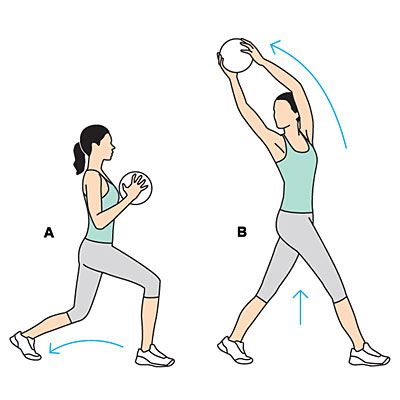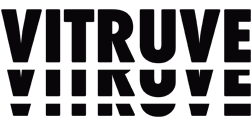28 de October de 2025
Ball Shoulder: Exercise Guide, Tips and Benefits
The shoulder is one of the most mobile joints in the human body, allowing a wide range of motion in sports and daily life. Often referred to as the “ball and socket joint,” the shoulder is essential for pressing, throwing, and overhead movements. Training the shoulder with controlled exercises—such as ball shoulder drills—helps athletes strengthen stabilizers, improve mobility, and prevent injuries. For coaches, integrating these movements into Strength and Conditioning programs ensures both performance gains and joint health.
What Are Ball Shoulder Exercises?
Ball shoulder exercises are movements that target the muscles around the shoulder joint using a stability or medicine ball. These drills are designed to challenge stabilizing muscles while improving strength and coordination. Because the shoulder joint functions as a ball-and-socket, these exercises enhance both mobility and resilience, making them valuable for athletes in overhead or contact sports.
How to Do Ball Shoulder Exercises Properly
- Set Up: Select an appropriate ball (medicine ball for strength, stability ball for mobility/stability work).
- Positioning: For stability ball work, maintain contact between the ball and either a wall or the floor; for medicine ball drills, ensure a solid grip and stable stance.
- Movement Execution: Focus on controlled, slow motions—pressing, rolling, or lifting—depending on the exercise variation.
- Engage Stabilizers: Keep the core and scapular muscles engaged to avoid overloading the shoulder joint.
- Breathing: Exhale during exertion phases and inhale during recovery phases.
- Progression: Start with light resistance and simple drills, then progress toward more dynamic or load-based movements.
👉 Coaching tip: Ball shoulder exercises are ideal for warm-ups, rehab, or accessory work. Ensure athletes are pain-free before adding load or intensity.

Muscles Worked by Ball Shoulder Exercises
- Deltoids (front, side, and rear)
- Rotator cuff muscles (supraspinatus, infraspinatus, teres minor, subscapularis)
- Trapezius and rhomboids (scapular control)
- Serratus anterior (scapular stabilization)
- Core stabilizers (for posture and balance)
Benefits of Ball Shoulder Exercises
- Improved Stability: Enhances rotator cuff and scapular control for safer overhead movements.
- Injury Prevention: Reduces risk of strains and impingements common in throwing or lifting sports.
- Rehabilitation Tool: Effective for athletes returning from shoulder injuries.
- Functional Strength: Builds strength that transfers to pressing, swimming, and throwing.
- Mobility and Control: Combines range of motion with stability training for long-term joint health.
- Progressive Training: Can be easily scaled with different ball sizes, weights, or movement complexity.
Ball shoulder work also integrates well with velocity zones to track tempo and execution speed, while monitoring fatigue to prevent overtraining.

Common Mistakes to Avoid
- Too much load too soon: Overweight medicine balls can strain the joint.
- Poor scapular control: Letting shoulders shrug up reduces stability and increases injury risk.
- Excessive range of motion: Forcing movements beyond mobility limits compromises joint safety.
- Relying on momentum: Fast, uncontrolled reps defeat the stabilizing purpose of the exercise.
- Ignoring pain signals: Discomfort in the shoulder ball joint should not be overlooked.
Variations of Ball Shoulder Exercises
- Wall Ball Circles: Small circles on a stability ball pressed against the wall.
- Medicine Ball Shoulder Press: Pressing overhead with a controlled range.
- Stability Ball Rollouts: Engaging shoulders and core simultaneously.
- Wall Ball Isometric Holds: Pressing into a wall to activate stabilizers.
- Rotational Ball Throws: Power-based variation for advanced athletes.
- Single-Arm Ball Presses: Enhances unilateral stability and control.
How to Include Ball Shoulder Exercises in Your S&C Workout
- Warm-Up Activation: Light drills to activate rotator cuff muscles before pressing or overhead lifts.
- Rehabilitation and Prehab: Ideal for shoulder recovery or injury prevention programs.
- Accessory Work: Add to strength sessions to reinforce scapular stability.
- Sport-Specific Training: Especially useful for overhead athletes (baseball, swimming, volleyball).
- Load Management: Track tempo and range of motion as part of a load-velocity profile to prevent fatigue accumulation.
FAQs About Ball Shoulder
What is the ball in the shoulder?
The “ball” in the shoulder refers to the head of the humerus (upper arm bone), which fits into the shoulder socket (glenoid). This ball-and-socket structure allows a wide range of motion compared to other joints.
What causes shoulder ball pain?
Pain in the shoulder ball joint is often caused by rotator cuff injuries, impingement, arthritis, or overuse. Poor posture and muscle imbalances can also contribute to discomfort.
How to fix shoulder ball pain?
Treatment depends on the cause, but common approaches include rest, corrective exercises, mobility work, and strengthening the rotator cuff. Severe cases may require physiotherapy or medical evaluation.
Why do I feel a little ball in my shoulder?
A small lump or “ball” sensation in the shoulder may indicate inflammation, bursitis, or a muscle knot. If persistent, it should be evaluated by a medical professional to rule out structural issues.
How do you treat shoulder ball joint pain?
Treatment usually combines rest, anti-inflammatory strategies, and targeted strengthening. Exercises like ball shoulder drills can help restore mobility and stability once acute pain subsides.
